One-tank Trip: A paddle on the Edisto River and a night in a treehouse
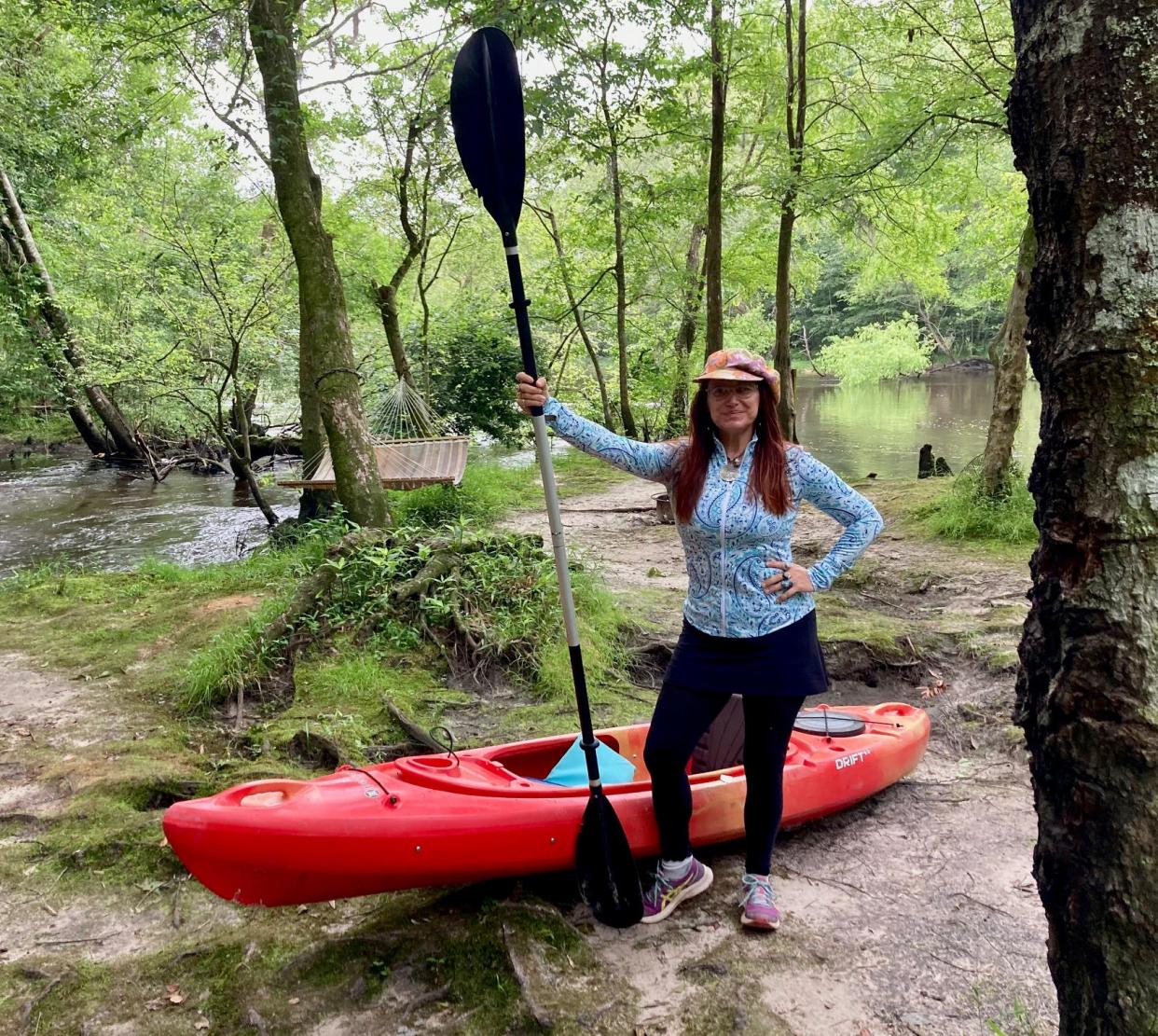
Maybe you’ve seen it scrolling social media. That sponsored ad popping up with canoes, blue skies, stands of bald cypress, and rustic treehouses to pitch a one-of-a kind overnight paddling odyssey on the Edisto River. Deftly delivering the ultimate outdoor adventure fantasy, the algorithms know me well. Though I’ve canoed and kayaked on the West Coast and across the Southeast, I’ve never done so and then slept in a treehouse.
Under the spell of savvy marketing, I was soon on the phone inquiring about booking.
Headquartered in St. George, South Carolina, about 90 miles north of Savannah off I-95, Carolina Heritage Outfitters offers this unique river opportunity for individuals, small groups, and families. You can make reservations online, but since I wanted to go solo, chatting with someone about safety and other precautions seemed most reasonable.
Owner Chris Burbulak promptly answered. He confirmed that recently a few women had done the two-day trip alone without issue. But emphasized that since canoes are a bit unwieldy for solo paddling, he’d set me up in a kayak and deliver my supplies to the treehouse. The three treehouses, he went on, had propane stoves for cooking but lacked running water and electricity, so I’d need to bring drinking water, a headlamp, and be prepared to use the outhouse. Chris also stressed insect repellant and rain gear as necessities.
Since no one else had yet booked on my dates, and likely wouldn’t, he figured I’d probably be alone on the 300-acre property. The final itinerary, he revealed, would entail paddling 13 miles on the Edisto, staying overnight in the treehouse, and paddling 10 more miles the next day to the pick-up point where he’d meet me after having collected my gear. With all things in tow, we’d then return to headquarters.
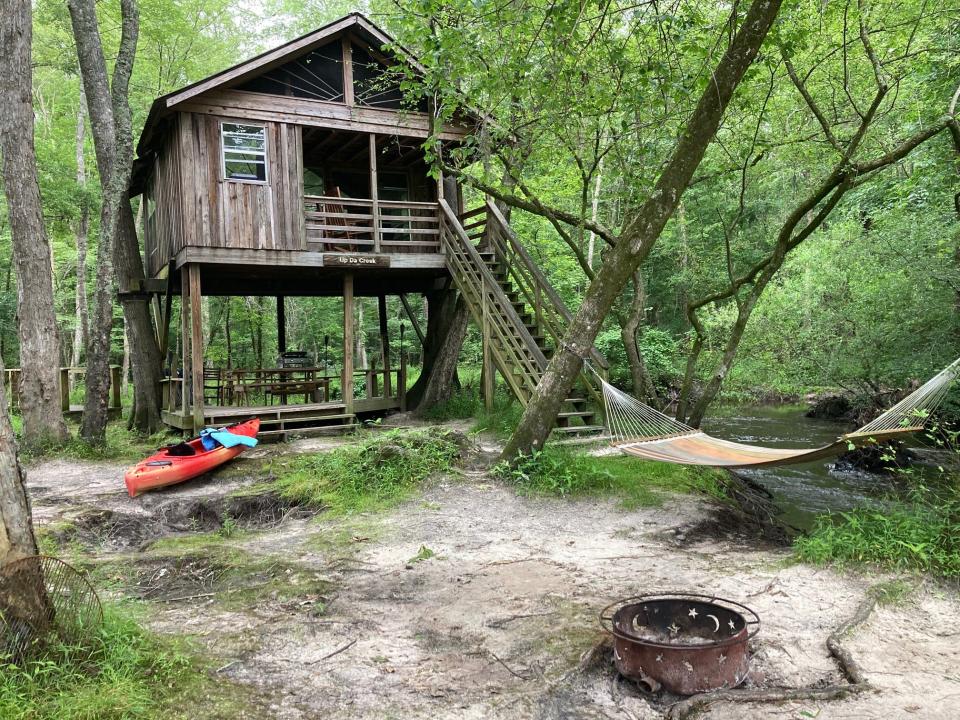
It sounded perfect, amazing in fact, especially that detail about getting to spend the night alone on the densely forested treehouse property. I would just need to be patient for a few more days until it all unfurled.
On adventure day, though, a massive storm system was wreaking havoc across the Southeast, and Chris and I agreed it would be safest for me to paddle the first day and stay in the treehouse, but on the next morning he’d come get me in advance of the storm. He offered to let me return and paddle another time to make up for what I’d miss.
And with that, on a drizzling gray Monday morning, I launched a little before 10 a.m. in a fire red kayak, with lifejacket, snacks, water, rain gear, and bug spray ready to roll on the Edisto.
From its forked headwaters in the sandhills of Saluda and Edgefield counties, the Edisto River runs unobstructed about 310-miles before greeting the Atlantic Ocean at Edisto Beach. It is the longest free-flowing blackwater river in the United States, and its watershed is home to old-growth tupelo and bald cypress, anadromous striped bass, shortnose and Atlantic sturgeon. Tracts of adjacent forest serve as lush breeding grounds for migratory birds like summer tanagers, yellow-billed cuckoos, and Mississippi kites. The endangered red cockaded woodpecker also lives within the old growth riverine system.
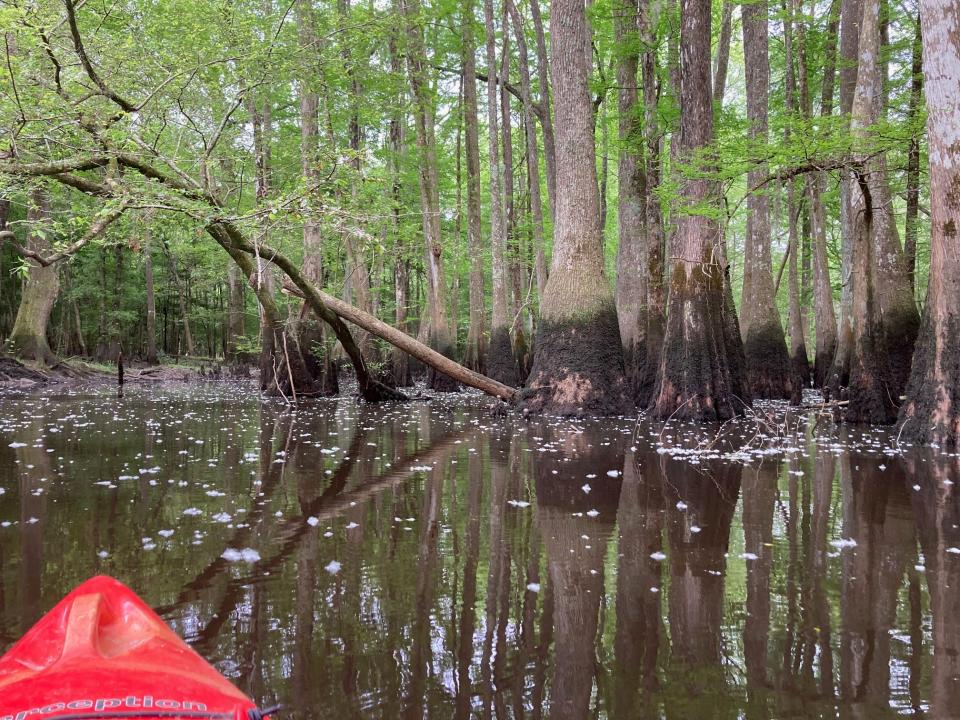
In my kayak, the rain-swollen blackwater moved unexpectedly fast, and at intervals, I noted large trees having recently succumbed to the current. Tussles of green waved above the surface from sunken branches, and great upended roots exposed masses of knots and runners no longer able to anchor the trees within the saturated bank. Maneuvering was more technical than I’d anticipated, and for the first two hours, alertness was key. The current combined with one too-slow turn of the boat could result in disaster, potentially capsizing the kayak and pinning me beneath a fallen giant.
Eventually, the river widened, slowed, and I relaxed. Life carried on loudly around me. The birds had been riotous from the start, but here in the calm, their calls were magnified, making it easier to hear the three-dimensionality of songs overlapping with notes nearby, mid-distance, and farther away. Cheering wrens, chortling tanagers, cacophonous cardinals, robins, eastern flycatchers, swallow-tail kites, questioning barred owls (yes, calling at mid-day!), Mississippi kites, night herons, hermit thrushes, and pileated woodpeckers all raucously united in a halleluiah chorus of avian delight.
At the peak of spring migration, I was blessed to be alone on the Edisto River, experiencing the force of nature that is the diversity of birds flitting and shifting in flight, sustained in fervent song. This is how and where magic begins, I mused. The clarion melodies of springtime rising and falling around cypress, tupelo, wild blueberries, water lilies to awaken them once again to the glories of photosynthesis and reproduction—this is it. Birdsong, a rarefied magic sparking all urges necessary and primordial.
I continued down the Edisto a few more hours before landing at the treehouse very much ready to get out of damp clothes and cook a hot meal. As promised, Chris had delivered my food, sleeping bag, and backpack near the stove beneath the house. After unpacking, I made a meal of mushroom and cheese ravioli with fresh red peppers, olives, and parmesan, and though I brought blueberries for dessert, I ate most of them while chopping veggies for the pasta.
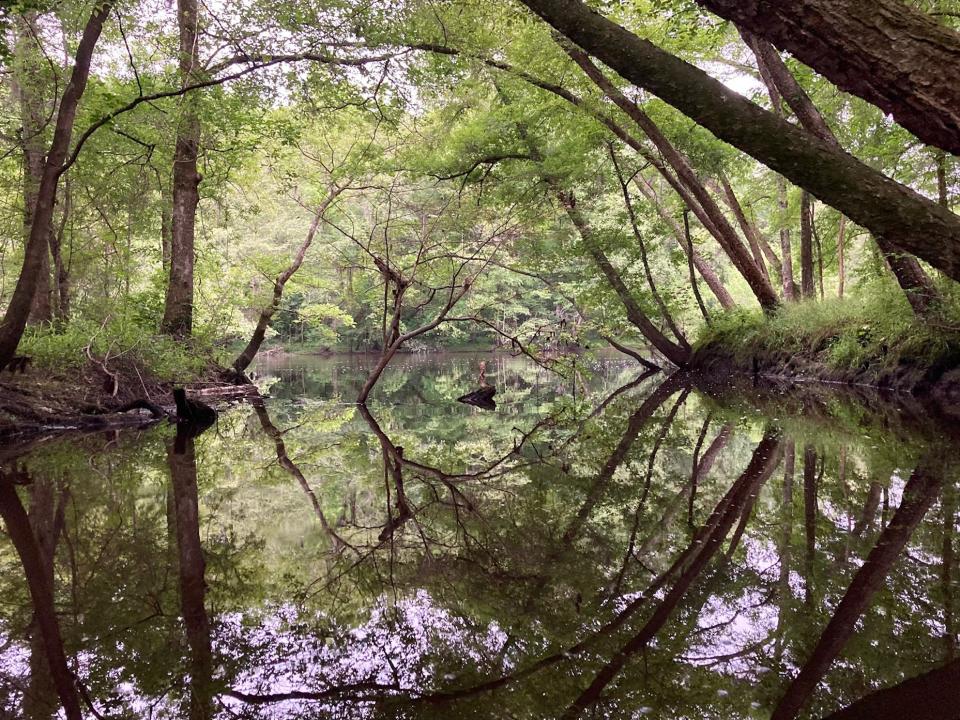
After dinner, I went back out on the river to explore a cut I’d noticed. Paddling upstream was formidable, but once off the main channel, the effort was much easier. In the calm blackwater, cathedrals of tupelo and bald cypress cradled nests of cackling black-crowned night herons. I maneuvered slowly so as not to startle them and lingered in the shallows as the watery forest grew darker. I paddled to the river, and with the swift current behind me, was back at the treehouse in under 20 minutes.
Around 7 p.m. the barred owls began calling, and by 7:30 p.m. I was tucked in my sleeping bag and didn’t wake until 7:30 a.m. when Chris texted to let me know he’d be there in an hour. The big thunderstorm was anticipated to hit the area around 10 a.m.
I was packed and ready when he arrived, but nothing in me wanted to leave. Experiencing the birds and great trees of this stretch of the Edisto made an indelible impression that I hope to be part of again later this summer. Sleeping in the treehouse beside the constant push of the river with the sounds of owls and whip-poor-wills lulling me to sleep was a gift of some of the best rest I’d had in months.
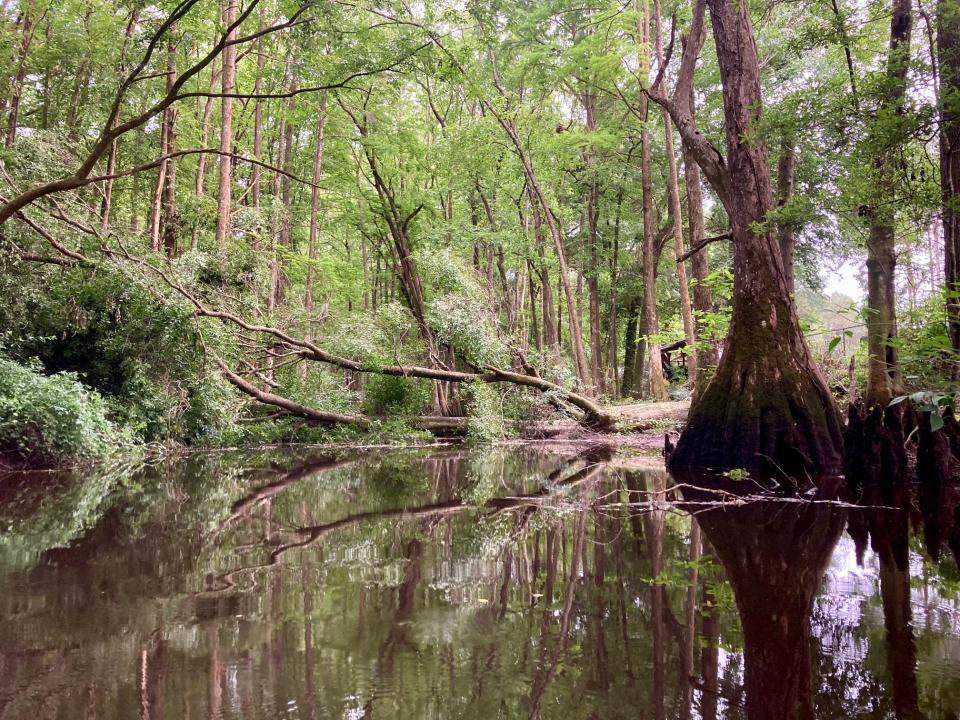
If such an adventure appeals to you, and this summer you’ve the time and means, I recommend booking it. The experience won’t fit everyone’s budget. Going into it, I didn’t reveal I was a writer and purposely paid the full $200 because I wanted to see what the experience would be like as a solo, paying woman, and not as someone paid or invited to review it. And to that end, a young family now owns the property and business after having painstakingly purchased it six years ago. Adventuring with Carolina Heritage Outfitters not only gets you a unique and supported experience on the free-flowing Edisto but also directly sustains a South Carolina-local family—making it a win on many, many levels.
This article originally appeared on Savannah Morning News: experience a wild blackwater river on the Edisto in South Carolina
